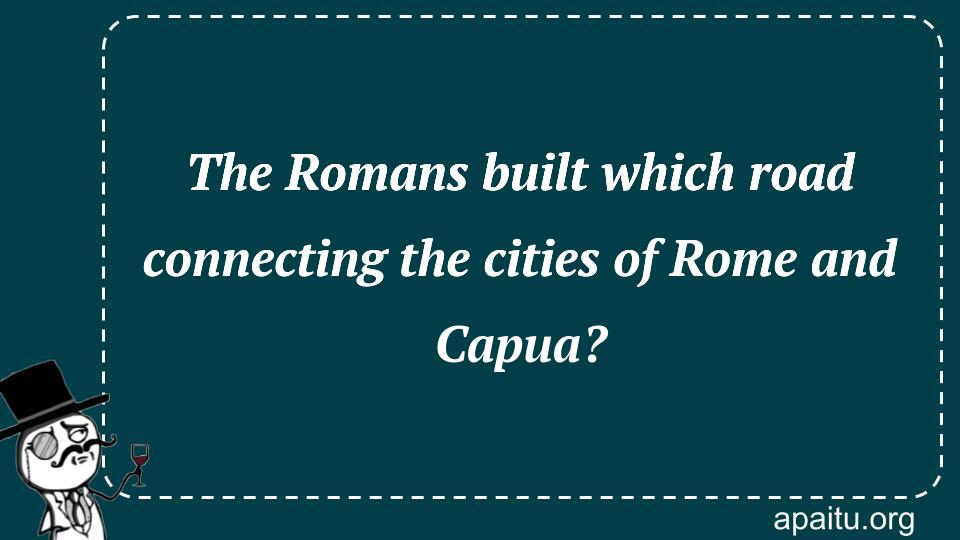Question
Here is the question : THE ROMANS BUILT WHICH ROAD CONNECTING THE CITIES OF ROME AND CAPUA?
Option
Here is the option for the question :
- Via Flaminia
- Via Appia
- Via Cassia
- Via Aurelia
The Answer:
And, the answer for the the question is :
Explanation:
The Via Appia, often known as the Appian Way, was Rome’s first major thoroughfare, constructed in 312 BCE. It was more than 120 miles long and was first utilized as a military supply route, connecting the city to Capua to the south. Its cleanliness and precision earned it the title of “queen of the roads” at the time. It was eventually expanded upon and used as a blueprint for the vast network of roads that strung together the Roman Empire.

Via Appia, also known as the Appian Way, was a famous Roman road that connected the city of Rome to the southern Italian city of Capua. The road was built in 312 BCE and was one of the earliest and most important roads in ancient Rome.
The construction of Via Appia was a major engineering feat for the Romans. The road was built using a combination of techniques, including cutting through hills and mountains, filling in low-lying areas, and paving the road with large stones. The road was also lined with drainage ditches and other features to ensure that it remained passable during all seasons.
Via Appia played an important role in the expansion and consolidation of the Roman Empire. The road was a major artery for trade and commerce, and it allowed for the rapid movement of troops and supplies across the empire. The road also helped to connect Rome with its provinces, and it helped to promote the spread of Roman culture and civilization throughout the Mediterranean world.
Over time, Via Appia became one of the most famous and celebrated roads in the Roman Empire. The road was lined with impressive monuments and landmarks, including tombs, temples, and other public works. Many of these landmarks still stand today, and they serve as a testament to the skill and ingenuity of the Roman engineers who built them.
Via Appia was not without its challenges. The road was subject to frequent flooding and erosion, and it required constant maintenance and repair. The road was also vulnerable to attack from bandits and other criminals, and it was often guarded by Roman soldiers to ensure the safety of travelers.
Via Appia remains an important part of Roman history and culture. The road is celebrated as a symbol of the power and ingenuity of the Roman Empire, and it continues to inspire admiration and awe among historians and travelers alike. The road’s legacy serves as a reminder of the enduring impact of the Roman Empire on the history and culture of the world.